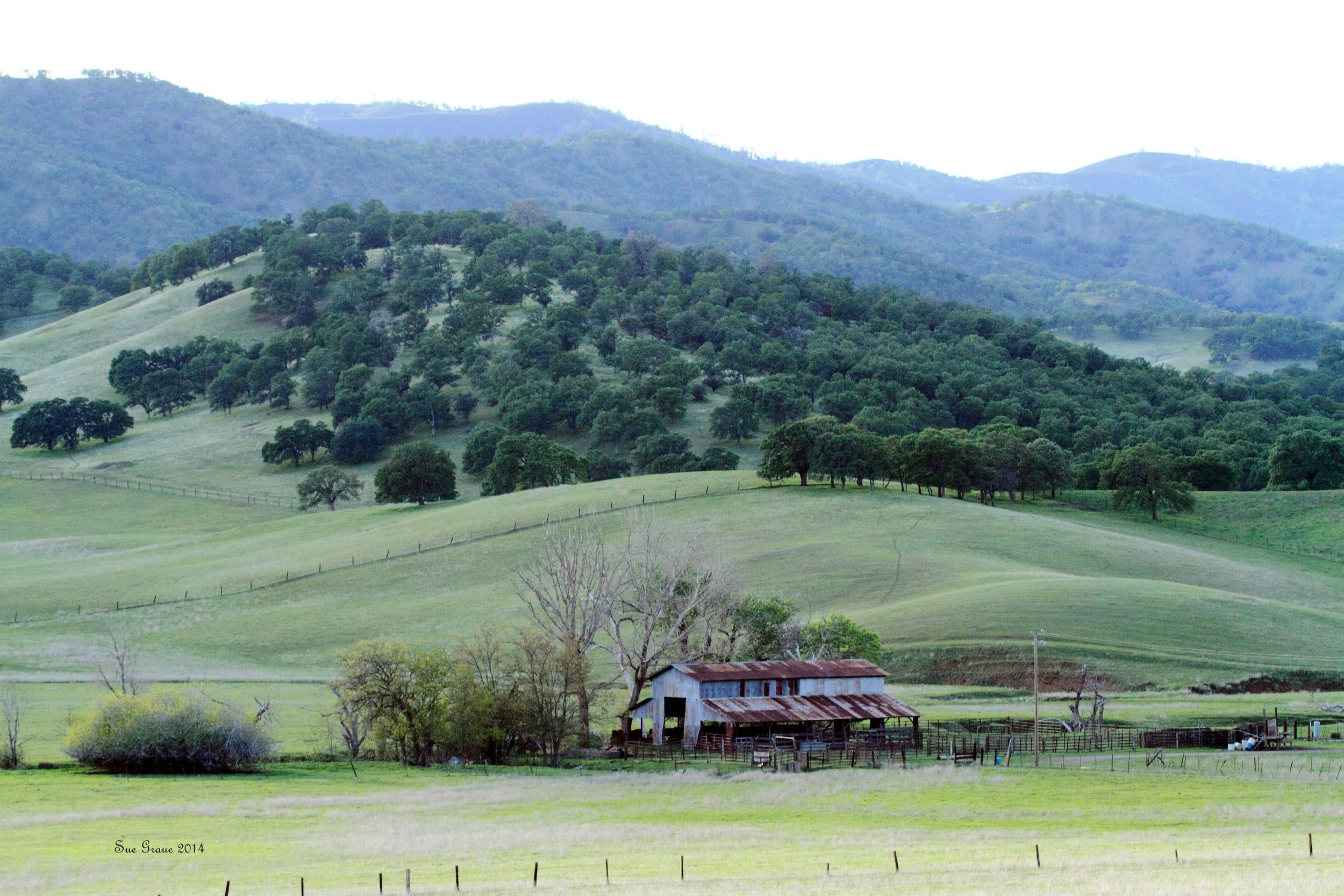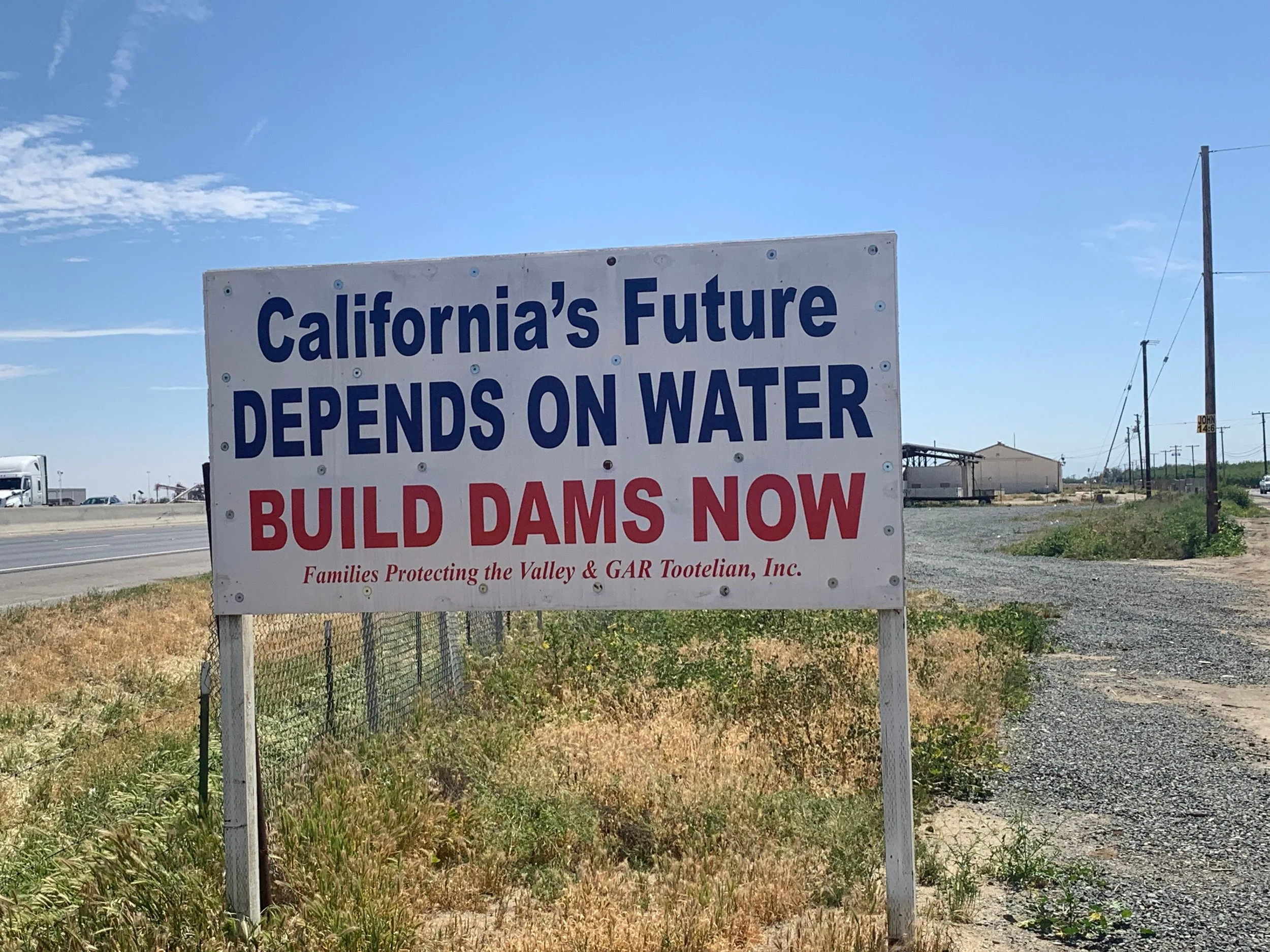Dam Roundup
Antelope Valley, the location of the proposed Sites Reservoir. Photo courtesy of Sue Graue.
Sites Reservoir
This 1.5 million acre-foot dam is being proposed by a consortium of rice (and increasingly walnut and almond) farmers largely coincident with the Sacramento Valley CVP settlement contractors and called the Sites Project Authority. The source of water would be the Sacramento River. The Authority is proposing to sell space in the reservoir to mostly urban water contractors in southern California and the Bay Area.
The Authority is working to complete their supplemental final EIR and presumably final EIS and expect the State Water Resources Control Board to notice their water rights application quite soon (days or weeks). The Board is under intense pressure from the Governor and others to approve the Authority’s application with favorable terms.
$900 million dollars in state Proposition 1 funding has been allocated to this $3 billion project. A $500 million USDA loan was secured during the Trump Administration, and a more than a billion dollar U.S. EPA WIFIA loan is being pursued by the Authority. The dam is also potentially eligible for federal Water Infrastructure Improvements for the Nation Act of 2016(WIIN) grant funding for up to 25% of project costs (~$750 million).
We will file a protest and thus be able to participate in a water rights proceeding. The water right and financing will determine whether this dam (and sometime) reservoir is constructed.
Aerial image of the “Del Puerto” rock outcropping, meaning “the portal.” Just beyond that is Interstate 5, the California Aqueduct, and the Delta-Mendota Canal. Photo courtesy of KM.
Del Puerto Reservoir
This 84,000 acre-foot proposed $750 million reservoir is being advanced by the Del Puerto Water District near Patterson, California. As near as can be determined, the purpose of the reservoir is for the San Joaquin River exchange contractors around Los Banos, which have high-priority CVP contracts, to park water in excess to their needs for sales to other CVP contractors and temporary sales to SWP contractors in the south state. The project is supported by Governor Newsom and potentially eligible for up to 25% WIIN Act grant funding. It could also be eligible for state Proposition 1 funding if one or more competing projects stumble and free up previously allocated funds.
FOR is in settlement discussions with the District and the Friant Authority over potential appeals to the litigation decision from the Stanislaus County Superior Court (a supplemental EIR on the transportation relocation element required). This project is likely to require an EIS and water rights, proceedings that have not begun (although Reclamation has scoped an EIS).
Water would be pumped from the Delta to fill this reservoir. We currently expect to file water rights protests to this proposed reservoir.
Pacheco Reservoir
This $2.3 billion reservoir proposal north of Highway 152 is undergoing review and potential redesign, forcing a new EIR by the Santa Clara Valley Water District.
The District has a $500 million state Proposition 1 grant allocation and is also seeking a billion-dollar-plus EPA WIFIA loan, which has prompted three letters from the opposition coalition to the US EPA concerning the proposed loan. The proposed reservoir would flood a portion of Henry Coe State Park — illegal — but the project is supported by the Governor, and thus the Governor’s Department of Parks and Recreation has, consequentially, suggested mitigation rather than opposition on the basis of the provisions of the California Public Resources Code.
The supply source is the Delta.
B.F. Sisk Dam seismic remediation and reservoir expansion (San Luis Reservoir)
This $1.1 billion seismic remediation project broke ground last year (85% federal taxpayer funded). A 130,000 acre-feet $1 billion reservoir expansion is also being spearheaded by the San Luis and Delta-Mendota Canal Authority (basically, the Westlands and Santa Clara Valley Water District) as later phases to this project. Reclamation believes the reservoir expansion project is “a thing” and would be eligible for 25% WIIN Act grants.
The reservoir expansion water would be pumped from the Delta and is projected to cost the “investors” $1,400 per acre-foot, assuming project average annual yield is 53,000 acre-feet (Reclamation’s December 2020 feasibility report assumed 22,000 acre-feet). For reference, many (most? all?) crops become un-economic when water prices reach $500 per acre-foot.
Schafer (formerly Success) Dam
The Corps of Engineers broke ground on the expansion of this Tule River reservoir by 10 vertical feet last summer. The 23,000 acre-feet expansion of the 84,000 acre-feet Success Reservoir should be completed next year. Releases from the Tule River reached concerning flows from rainfloods earlier this year.
This dam joins the nearby Terminus Dam on the Kaweah River that has had largely taxpayer-funded reservoir expansions recently. The reservoir capacity of this dam on the Kaweah was expanded from 143,000 acre-feet to 187,000 acre-feet in 2005.
Nevertheless, the nearby highway signs clamoring for more dam storage have not come down.
Signs litter Interstate-5 throughout the San Joaquin Valley pleading for more dams, but dams will do little to increase water security in California. Photo by Ron Stork.
Isabella Dam
The $500 million seismic and spillway capacity deficiency correction project has completed sufficiently that the project was dedicated and the Sacramento District of the Corps of Engineers sought permission from its Washington DC headquarters to end the operating restrictions on reservoir levels this year.
The water is from the Kern River, and the project provides flood protection for Bakersfield — the country music capital of the west. The dam does its job, often too well. But this year the Kern River will actually reach Bakersfield and the downstream terminal lakebeds. It will be a pleasant sight to many in the city.
https://www.spk.usace.army.mil/Media/News-Releases/Article/3355756/usace-unveils-isabella-dam-modifications-in-ribbon-cutting-ceremony/



